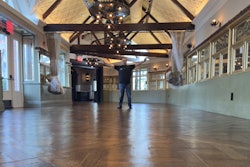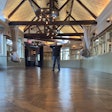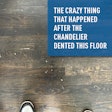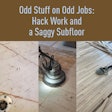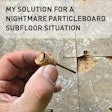I managed to get back one of the jobs I thought I had lost last week because of an old telephone number. It's a 100-plus-year-old building that has undergone several modifications over the years. Now they are changing all the heating and air conditioning equipment, and wanted to make sure that the new systems wouldn't cause problems with the building. Old buildings didn't have A/C, and adding that can cause lots of problems, especially in humid areas. I really like crawling in all the nooks and crannies of old buildings. You see some interesting things and some great construction.?
Question of the week: If a building is working fine and you change the floors, why are there problems with the new floors because the building is too humid? I looked at a floor in Charleston, S.C., this week that was replaced a couple years ago in an insurance claim from a washing machine flood. The house is about 40 years old. The replacement floors cupped shortly after installation, and everyone is blaming it on a too-humid house. (No washing machine residual issues.) I measured RH in the upper 50s inside and low 60s in the crawl space (swing season, no heat, little A/C). Some signs of surface fungi on joists, but nothing unusual for this area. So the conditions are normal for this house (and this area). Why then do we try to blame the new floor problems on these normal moisture levels?

















